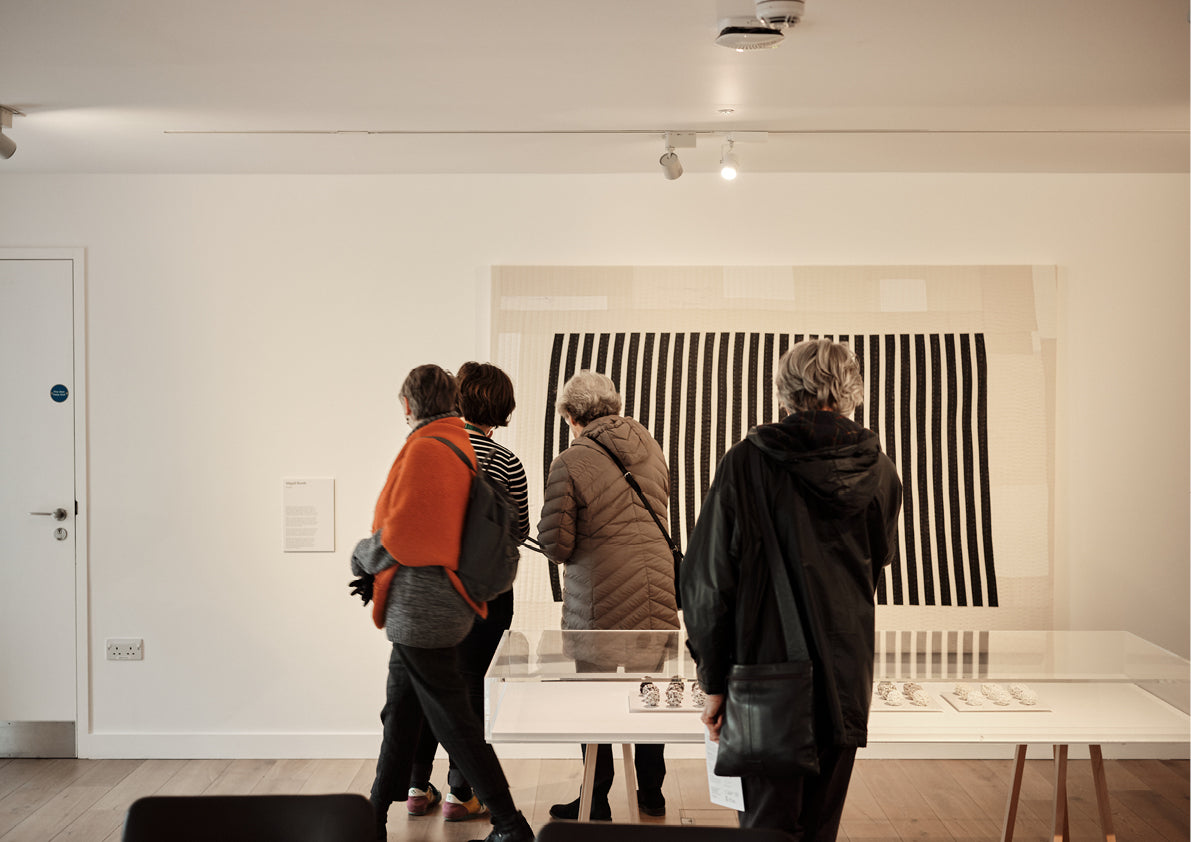
This autumn, we partnered with Kettle's Yard in Cambridge to produce an exhibition TOAST Re-New - that explored the idea that clothes can have a life beyond their first wearer. We invited five artists to re-new old TOAST garments and waste materials from indigo-dyed cloth to hand-woven ikats and repurpose them into something unique and unexpected.
The five textile artists - Alice Fox, Abigail Booth, Hannah Robson, Richard McVetis and Sophie Rowley - created innovative pieces that were exhibited at Kettle's Yard. The work ranged from pieced quilts and latch-hooked rugs, to constructed, woven sculptures suspended from the ceiling. The exhibition sat in line with Jim Ede's ethos towards supporting artists, and followed his belief in art's power to make us look again and change how we act in the world.


Set on a quiet street in the centre of Cambridge, Kettle's Yard is the former home of Jim Ede and his wife Helen. Throughout the 20s, Jim Ede was the curator at the Tate Gallery, and promoted the work of many contemporary artists of his time. Over the years, he accumulated, collected and gathered paintings, sculptures, and textiles from his friends.
Ede thoughtfully and comfortably placed his collection around his home, setting Henry Moore sculptures amongst collected objects, trinkets and furniture. His house was always kept open for the students of Cambridge University. Afternoons in the house were reserved for the students to drop in and read, study and sometimes borrow the artworks.

Left in its entirety to the University of Cambridge in 1966, the house and its collection is now open to public, with a contemporary gallery space and research centre. It still retains its initial commitment to inspire and engage audiences through art.
TOAST Re-New took part in the newly opened gallery and research space, and welcomed visitors from the 30th October to the 3rd November. TOAST provided each artist with the same waste fabrics and used garments. The artists repurposed and transformed the fabrics using a range of both traditional and innovative techniques.


Sophie Rowley unravelled old TOAST sweaters to create a wall tapestry, using traditional rug-hooking techniques. An age-old craft, hooked rugs date back to the early 19th century in Yorkshire. Workers in weaving mills collected the remnants of threads or thrums' that accumulated on the floors of the mill, turning them into intricate textile pieces. Using a latch hook, Sophie hand-pulled waste thrums of wool through a recycled canvas netted frame.
Alice tore up old TOAST garments and carefully and laboriously twisted the strands to create 36 balls of fine string. Through the process of stripping the cloth down and twisting each different fabric into cord, Alice became increasingly aware of the subtle differences between each fibre and cloth construction type.

Hannah unraveled damaged TOAST sweaters, made from linen and wool, to create a sculptural, cross-like construction, composed of six wefts. A block colour of Swedish lacing ran across the diagonal, creating a counterpoint to more heathery, rich tones of blue wool, which she created by winding three yarns together. The piece was woven by Hannah on the loom as a flat form, but carefully constructed in such a way that it opened up into a three-dimensional structure.
Richard used black thread, waste jacquard fabrics from TOAST and his own waste fabrics from previous artworks - from lightweight cottons to repurposed stage curtains. He created deliberately minimal, six by six centimeter squares, each taking twenty hours to create. The stitches Richard uses are known as seed stitches. All vary in size and tone something Richard is able to control by letting some sink further into the base fabric than others.


Abigail assembled offcuts of cotton cloth leftover from pattern making and sample production. Subtle pigment was used across the surface of the stitched quilt, which was produced from burning the remnants of TOAST offcuts. Production processes and marks from the fabric's previous life become indistinguishable with each stitch from the artist's hand.
Throughout the exhibition, we ran workshops with the artists, who taught the techniques of quilting, latch-hook rug-making and embroidery. Each workshop incorporated waste materials.
This exhibition marked TOAST's new initiative TOAST Circle - a project promoting the circularity of clothing.
Words by Daisy Gray.
Images by Liz Seabrook.

Add a comment